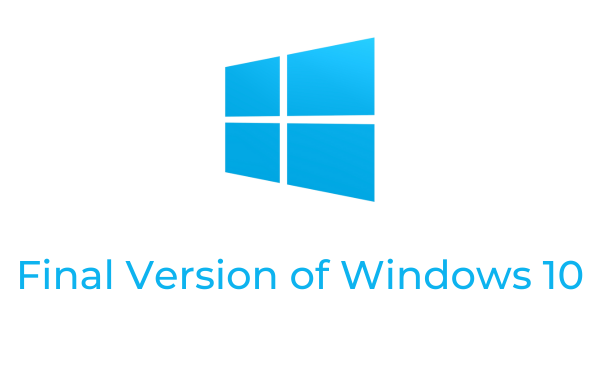
On April 27th, 2023, Microsoft reminded us that version 22H2 of Windows 10 will be the last version of the product. Version 22H2 was released back on October 18th in 2022 and included several new feature updates to the operating system that’s been around since 2015. Although it’s not quite time to say goodbye to Windows 10, it’s important to know what this means for your home and business devices if you are running it.
Final Version and End of Life for Windows 10
Version 22H2 is confirmed to be the final version of Windows 10 for the Home, Pro, Pro Education, Pro for Workstations, Education, Enterprise, and Enterprise multi-session editions of the product. However, there is no need to panic as the end of life for Windows 10 isn’t occurring until October 14th, 2025. Until that point, Microsoft will continue to release security updates for the listed products ensuring that security vulnerabilities are patched. To clarify, a version in this case is considered a feature update which focuses on quality improvements for existing features and sometimes the introduction of new features. An update in this case is a smaller-scale patch that’s designed to fix bugs and eliminate security vulnerabilities. Typically, new versions are released once or twice a year, and updates are released regularly when new bugs or security vulnerabilities are discovered. But what does all of this mean for your home and work networks?
It's Time to Start Planning
Although Windows 10 will continue to be supported with security updates until October 2025, it’s never a bad idea to get ahead with planning for upgrading. Staying on top of new technology is a fundamental part of IT for both hardware and software, and having a good plan in place for when and how you’ll upgrade is essential. For example, IT infrastructure that is older than 3 years old is considered to be aging equipment, and not having a plan to replace that equipment when it’s no longer compatible can lead to a large, unexpected cost that you may not be prepared for. This is the same for software, the only difference being that it’s up to the developer when the software will no longer be updated and supported rather than a general rule of thumb. In either case, it’s important to know when equipment or software needs to be upgraded and plan for how the process of upgrading is going to go to ensure the smoothest implementation possible.
What to Expect with Windows 11
Windows 11 introduces many new features with the goal of maintaining familiarity and supporting hybrid work styles. In terms of security, it’s similar to Windows 10 in that it includes hardware, OS, application, and user security features. There are built-in security applications and baseline settings which are automatically configured on devices. One interesting new feature is Windows Hello for Business which replaces passwords with a PIN or biometric that’s locally stored on the device. When it comes to services, Windows 11 makes it easy to access popular services such as Windows 365 and Microsoft Teams. Windows 11 is also very customizable. You can pin applications to different locations on the screen in different sizes and save them as a “Snap Group” for easy to access multitasking. The start menu can be customized to pin and unpin applications that are commonly used, and you can even create a second desktop with the virtual desktop feature.
Windows 11 is designed to be a natural transition from Windows 10 and improve upon the features you grew used to with it. If you want to see the full overview of what you can expect with Windows 11, see this article here.
Be sure to stay on top of your technology and start planning for Windows 10 end of support. Also, be sure to check out Windows Server 2012 End of Life if you’re currently running that version of Windows Server as the end of life for that product is in October 2023. If you have any questions about upgrading to Windows 11 or upgrading from Windows Server 2012, contact Rhyme’s IT team today.
Sources: Microsoft Learn: Windows 10 Home and Pro | Microsoft Learn: Windows 10, version 22H2 end of support date updated | Microsoft Learn: What’s new in Windows 10, version 22H2 | Microsoft Learn: Windows 11 overview